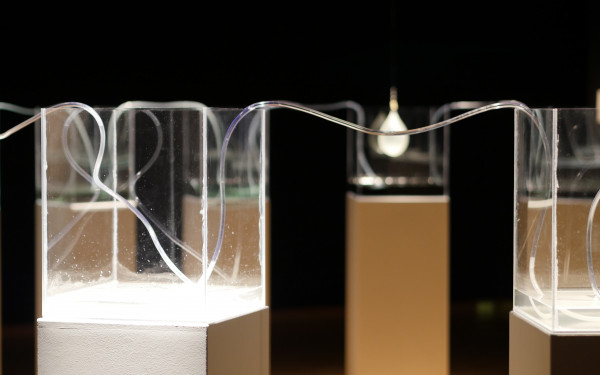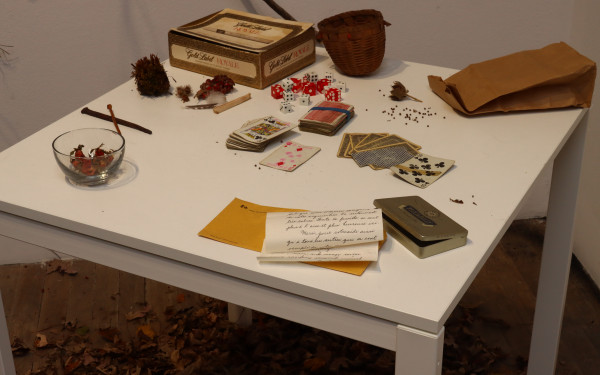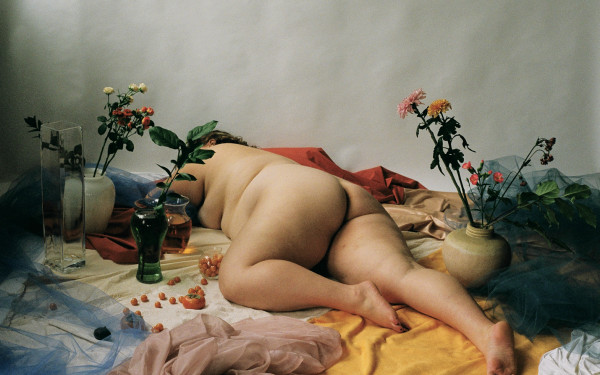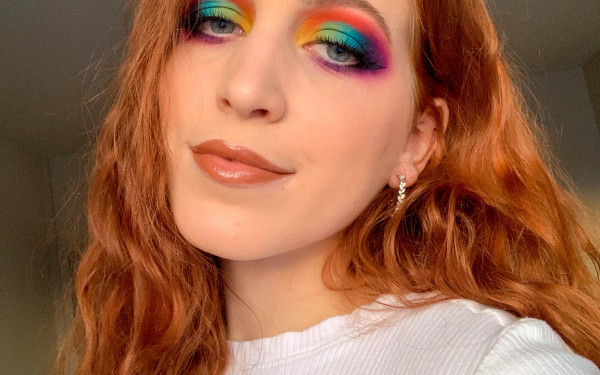New multiple disciplinary exhibit in downtown Montreal examines our vision of nature
‘Situated Gazes’ is on at the Skol art centre until Feb. 19
Standing in a spacious white room, the only sounds that can be heard are bird calls and sounds from nature, playing from a short film by artist Pamela Breda that’s projected on the wall.
This work, along with all the others in the exhibit, has been curated by Skol’s artistic director Stéphanie Chabot, under the name Situated Gazes. The multidisciplinary exhibit features textiles, paintings, films, photography, and sculptures created by five different artists which all work together to encompass a theme of how we view nature.
Chabot said the name for the exhibit came from author Donna Haraway’s theory of situated knowledge. “It’s this question of how we see the world and where is truth really situated, and how can we change our way of seeing the world without really abandoning the ideal of truth either,” she explained.
Skol’s website states the artists featured in the exhibit “circumvent or deconstruct the usual frameworks of our perception of the Earth and the Living.” One of the largest pieces in the show is by Francys Chenier. It’s a series of coloured circles that show different colours and phases of the sky. Chenier’s website says the piece took place in 2 stages, the first being a state of reflection and observation of the sky, the second was writing down the time and thoughts that he had while watching the sky. Demonstrated through all of the works in the exhibition, Chabot thinks art will play an important role as an exploratory tool to find new ways to see the world and situate ourselves in it, which she said is urgent.
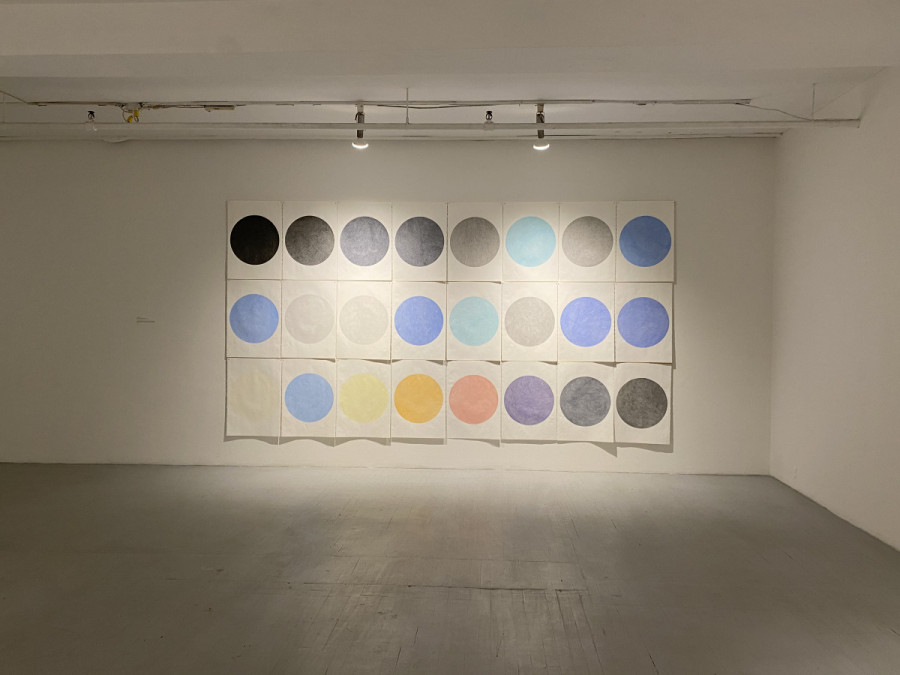
The exhibit features work by Charlotte Guirestante Ghomeshi, who graduated from Concordia in 2020 with a bachelor’s in photography. Her contribution to the show includes a photographic triptych of the moon, a burning flower, and a cross. She said her project reflects the human desire to conquer. “It’s all things that we’re trying to possess or control in a way,” said Ghomeshi.
Read more: Meet Montreal-based clothing brand Em & May
One of Ghomeshi’s pieces titled Camille originally wasn’t supposed to be part of the show. She explained that the blurry photograph is more about innocence, naivety, and trying to understand the world, whereas the triptych is about noticing the darker things in the world. “I didn’t want to put it [at first], but finally I was really happy,” she said. Ghomeshi talked about how working with a curator helps her see her art in a different way.
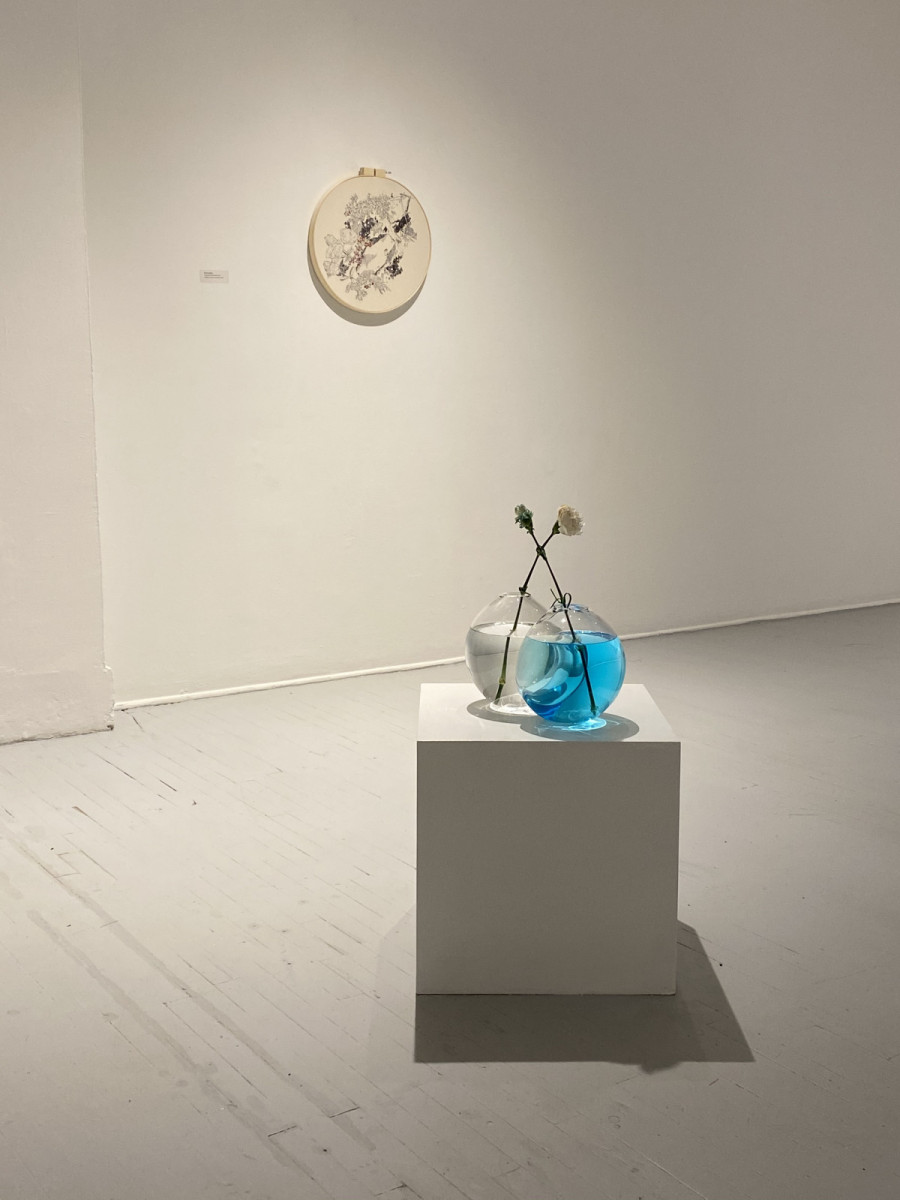
“I think it’s a dialogue that can be really nourishing for the artists,” said Chabot when talking about the process of curating a show such as this one. “You have your own interpretation of your work but there are things you don’t necessarily see.”
“I thought it was interesting that even though the link might not be obvious, the curator was able to look into our processes to find that link to [situated gazes],” said Julie Roch-Cuerrir, whose work is also featured in the exhibit.
Roch-Cuerrier graduated with a bachelor’s in visual arts from Concordia, and has a master of arts from the Royal College of Art in London. Her multimedia work for the show includes unique glass vases that hold flowers from her series Corespiration.
The inspiration for the series came from a correspondence between Roch-Cuerrier and Josephine Rivard, who is an artist and curator. The discussions included themes of feminism and nature, eventually evolving into concepts of reciprocity and mutualism. “I’ve been trying to integrate [the living] in the exhibition and have the temporality of the living things exist in that space,” said Roch-Cuerrir.
It’s the only piece in the show that isn’t displayed on a wall, and the flowers are in coloured water, which starts to pigment the pedals creating a reminder of passing time.
“Pretty much everyone involved kind of found a way to look at things differently,” said Chabot about the curation of the art. “That can lead us to different frameworks to look at the world, more harmonious, [and] less destructive, hopefully.”

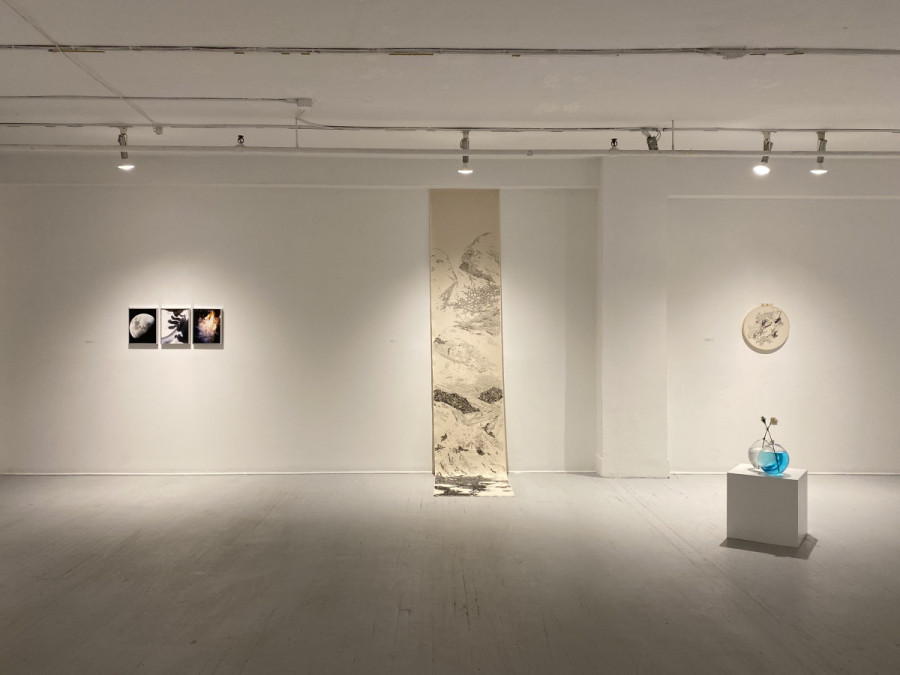
_600_832_s.png)

